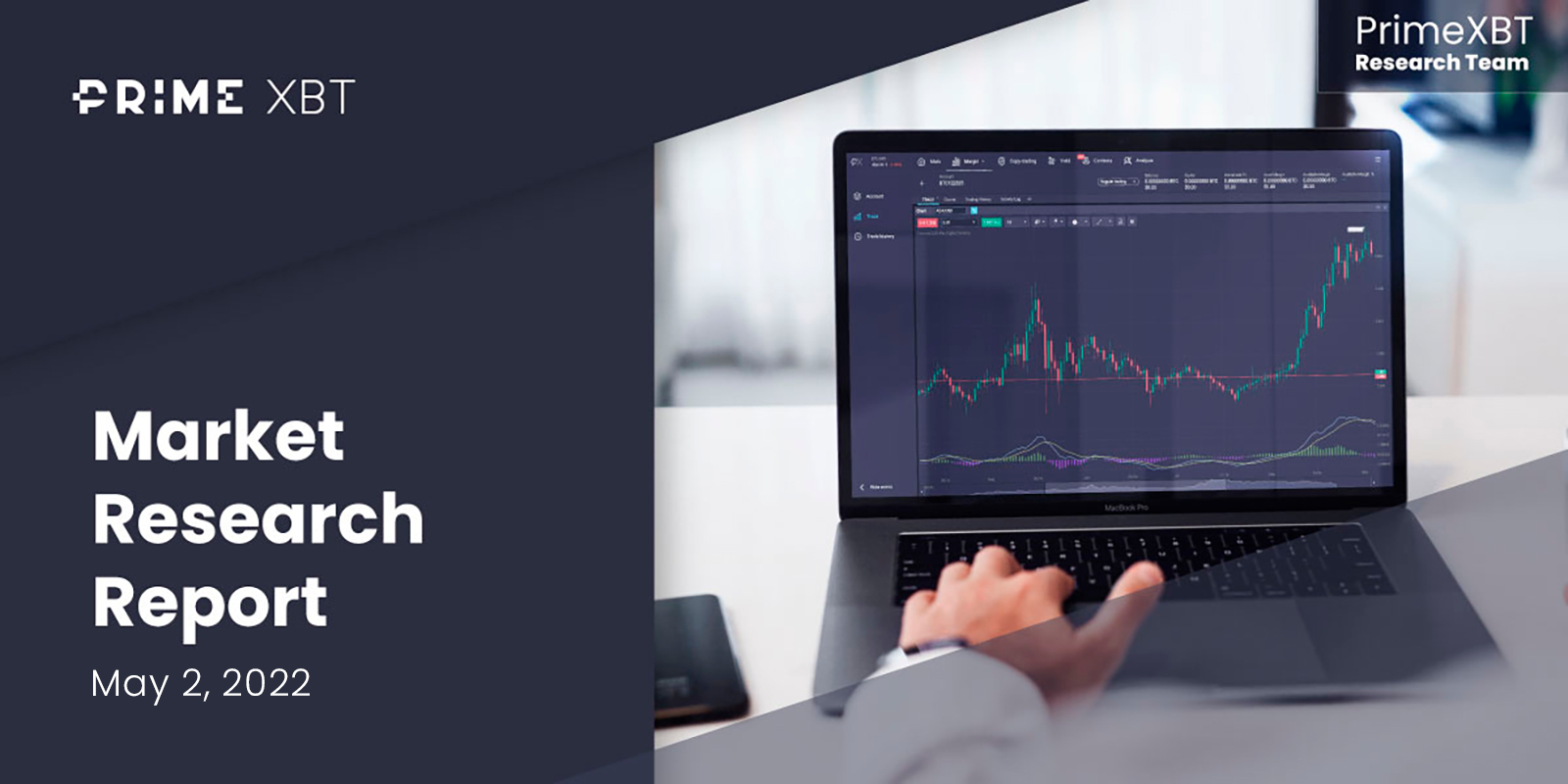Introduction To Intraday Trading And the Most Successful Day Trading Strategies
In today’s ever-evolving world, notably in the workplace, the workforce is increasingly working toward remote jobs of at least offering some semblance of work-from-home flexibility.
Due to this, there’s been a growing trend of everyday Joe’s seeking to make money through day trading on the side, during their normal workdays and careers. And with traditional markets like stock indices, oil, gold, and more heating up and more volatile than ever, there’s also been an extreme spike in those seeking to make day trading their sole source of income.
To help equip these aspiring day traders or those new to intraday trading strategies with all of the successful tips, tricks, and more to help provide a competitive edge and fast track to profitability.
This guide will outline exactly what day trading is, how much money can be made day trading, and reveal the top trading strategies and technical analysis indicators that make intraday trading of markets a lucrative and exciting experience.

What Is Day Trading? The New Generation’s Way To Earn Extra Income
Day trading is normal trading, but focusing on shorter time frame strategies that allow positions to be taken and closed in the same trading day session.
Experienced day traders enjoy more flexibility and less stress than traditional swing traders. Rather than taking and holding positions for the long-term, which can lead to constant monitoring and a potential for the market to go in the other direction, day trading focuses on short-duration intraday trades.
These smaller time frames, shorter duration trades are made in quick succession for scalping smaller profits that eventually stack up. Due to the high-frequency trades, although the size moves are typically smaller, it allows for many, successful trades in a session that can often amount to more profit than one single trade.
And with day trading, there’s less temptation to try to time the top or bottom of markets for the largest possible profits.
Day trading can be profitable for those who take it seriously, or those who do it at their leisure in their spare time.
Day trading is often viewed as the ideal career for those who can make it their sole source of income. Day traders have the luxury of working from anywhere an internet connection exists, where they can access margin trading platforms such as Noble Pro Trades. All it takes is to find the best day trading strategies that work and implement them regularly.
Basic Day Trading Tips
Before we get started on more complex strategies, here are some basic day trading tips everyone should always keep top of mind:
- Never take positions larger than you are comfortable with. It will lead to poor decision making.
- Take profit early and often. No one ever regrets booking profits, only forgetting to do so soon enough.
- Markets turn the other way quickly, so be sure to have take profit levels in mind ahead of each entry.
- The largest moves typically occur during each trading session open or close. This often sets the trend of price action taking place intraday.
- Get comfortable trading the smallest time frames. The higher the frequency of trades, the faster capital will grow.
- Don’t go too fast, however, or you risk making a mistake.
- Pay close attention to risk management strategies.

Fundamental Analysis Vs Technical Analysis
Understanding the difference between fundamental and technical analysis is among the first things that any day trader needs to learn.
Next, is educating oneself on the importance of each of these unique valuation methods. Both are required to get the full picture of an asset’s health and long-term price growth projections.
Fundamental analysis is the study of the underlying value of financial assets, using various data points, both qualitative and quantitative.
The approach of these methods and the tools used differ for if an investor or trader is considering stocks, cryptocurrency, forex, or another financial asset.
Fundamental analysis is nothing like technical analysis which involves reviewing price charts and watching for signals from technical analysis indicators and oscillators.
Fundamental analysis involves reviewing quarterly revenue reports, considering product line-ups, or watching a particular industry’s projected growth. This sort of fundamental analysis is called quantitative analysis
Quantitative analysis using actual financial figures, product sales figures, profit margins, operating expenses, return on assets, statistics and other forms of quantifiable data to drive valuations.
Qualitative analysis, on the other hand, involves more gut-reaction instincts and critical thinking. Examples of this sort of analysis include looking at a CEO’s track record of success and his family life, to get a glimpse of if they’d make a good leader or not that will drive their company to profitability.
Such a decision could also drive a trader to profitability as well. No amount of number crunching ever could replace a gut feeling, and due to this, every trader’s qualitative analysis will differ greatly.
Technical analysis, however, is completely different from either form of fundamental analysis. TA involves studying candlesticks, indicators, oscillators, trading volume, chart patterns, and more.
When combined, fundamental analysis and technical analysis can provide a powerful one-two punch in terms of arming traders with all the info and intel they need to be successful.
Learning to excel at these studies can mean the difference between substantial ROI and meager profits from day trading. The more advanced you get, the more profitable you will become.

Best Indicators for Day Trading Cryptocurrency and Traditional Assets
Nearly any trading technical analysis indicator can be used to create a successful day trading strategy with a strong win-loss ratio, regardless of the asset or price activity. These tools identify entry points, where to place a stop, gauge trading volume, and much more.
Some work more efficiently across the cryptocurrency market, while others perform best across traditional assets like forex or stock indices.
It is learning how to use and implement these indicators to trade powerful intraday price movements that will grow capital the fastest.
Noble Pro Trades offers built-in technical analysis software for drawing chart patterns and comes with many of these powerful trading indicators included.
RSI Intraday Trading Strategy
In the below example, Ethereum’s RSI reached oversold levels, prompting a buy signal that resulted in a 3.79% gain.
The moment the RSI breached below a reading of 30 on the indicator, it was a bullish signal that a long order should be placed.
A trader would then take profit and close the position the minute price reached overbought levels on the RSI.

It is important to caveat that not all pushes into oversold or overbought conditions mark a top or bottom. In the next example, the RSI made a double top, while the price only made on top. The slightly higher low on the trading indicator but higher high in price action resulted in a bearish divergence.
Pros and Cons of RSI Intraday Trading Strategy
The Relative Strength Index is a technical analysis indicator first developed by J. Welles Wilder that tells day traders when assets reach oversold or overbought conditions.
It also is used to measure trend strength and momentum, and is often used to spot signs of an early reversal. This makes the RSI perfect for momentum day trading. The RSI is easy to read thanks to the gauge on the oscillator.
Simply waiting for the RSI to reach over 70 or under 30 is typically a good enough signal for most traders to take a position. This can be altered depending on risk appetite and the loss ratio applied to your risk management strategies.
It is worth pointing out, however, that the RSI can often give false signals or a double bottom or double top reading, so traders should also confirm these movements with a breakout of an important trendline whenever possible.
MACD Intraday Trading Strategy
In the below example using the MACD on CFDs on Natural Gas price charts, a short position would be placed the moment the MACD lines crossover, marking the start of a bearish trend.
Traders can either close or take a long position the moment the MACD lines cross back upward. In this case, a short position

Pros and Cons of Strategy MACD Intraday Trading Strategy
The MACD is used to help traders predict when trend changes are about to take place.
MACD is short for the Moving Average Convergence Divergence indicator and was created by author and trader Gerald Appel in the late 1960s.
It is regularly referred to as a lagging indicator, which can often result in false signals. But that doesn’t mean it shouldn’t be used as a part of every trader’s toolset.
The MACD consists of two lines and a histogram to visually represent price moves.
Parabolic SAR Intraday Trading Strategy
Parabolic SAR is a favorite strategy amongst cryptocurrency traders. It allows traders to easily see where to place a stop-loss order, and then use the tool to set trailing stops as price moves up in a bullish direction.
In the below example, although the pivot point is far below, the entry criteria isn’t met until the dots or “SAR” appear below the price candles.
The moment the SAR appears below price candles, a long order could be placed. This resulted in a 10% intraday move after reaching the price target
Pros and Cons of Parabolic SAR Intraday Trading Strategy
Parabolic SAR, also called the Parabolic Stop and Reverse indicator is easy to use and offers a simple to understand visual signal system. It is commonly used to find potential reversals and gauge trend strength, and like the MACD is considered a lagging indicator.
Parabolic SAR is also often combined with other indicators, such as moving averages and others, to confirm signals before taking any position size.
Bollinger Bands Intraday Trading Strategy

Pros and Cons of Bollinger Bands Intraday Trading Strategy
Bollinger Bands were created by renowned financial analyst John Bollinger, and consist of two plotted standard deviation lines and a simple moving average. The deviation lines widen or narrow depending on the strength of volatility in an asset price.
When the bands tighten, volatility has dropped signaling that an explosive move is expected.
90% of all price action takes place within the bands, so any breakouts of the band are usually rejected back into the bands on the next candle close, just like the examples above.
“Riding the bands” may be profitable, but only if accompanied by a high volume breakout.
Moving Averages Intraday Trading Strategy
Next, we’re looking at day trading strategies using both a fast moving average and a slow moving average. Combined, these two lines can act as a signal to take a position the moment price passes through both moving averages.
In the below example, each time the price penetrates both lines, it results in a trade signal.
Shorting the breakdown led to a 1% gain on the way down, then another trade when price passed through the lines once again resulted in another 1% return on the way back up.
This makes for an ideal intraday trading setup, and by using 1000x leverage on forex currencies on Noble Pro Trades, every pip becomes a huge profit.
And by only taking trades when both lines are breached, you can avoid getting shaken out by a pull back to just one line.

Pros and Cons of Moving Averages Intraday Trading Strategy
Moving Averages are simple mathematical formulas made into visual representations so traders can more easily analyze individual data points across a series of time periods.
Moving Averages help day traders avoid false readings and prevent acting to preemptively with closing a position.
Moving averages can run across any time period, long or slow. Experimenting with these time frames are critical to using the tool.
Williams Alligator Intraday Trading Strategy
In the below trading strategies using the Williams Alligator tool, a long trade is made the moment price candles penetrate all three price lines.
A close of the long and a short trade is opened when the top pivot breaks back down through the three lines.
Other strategies are possible, but this is among the most effective and conservative for intraday trading.

Pros and Cons of Williams Alligator Intraday Trading Strategy
Williams Alligator got its name because the indicator’s creator visualizes the tool as an alligator eating up the price action. When there’s a lack of a trend, the alligator is satisfied and its mouth remains closed. But when there’s an active trend, the bands or alligator mouth widens.
When price passes through all three lines it is a powerful signal to take a long or short position.
Ichimoku Intraday Trading Strategy
The Ichimoku indicator is one of the most complex technical analysis tools available.
It can be confusing for those new to it, but it offers a wealth of information at your fingertips.
The various lines can cross over or represent support and resistance, but in this example, we are looking only at a break and candle close through the cloud.
The first bullish move through the candle was a strong one, but a long after confirmation still resulted in strong upside.
As soon as the candle closed through the cloud once again, it was a short trade. These tools can be used for reverse trading and spotting trend reversals.

Pros and Cons of Ichimoku Intraday Trading Strategy
The Ichimoku indicator was designed by Japanese journalist Goichi Hosoda in the late 1930s. Hosoda was known as Ichimoku Sanjin, which translates to “what a man in the mountain sees.”
His tool was designed to provide traders with an at a glance visual representation of everything that is going on across any market.
The biggest con is within how confusing it looks at first glance, but the reason is because so much valuable intel is being provided all at once. So it can be overwhelming.
In a way, however, so much info is also a huge pro for traders who can understand the tool.
On-Balance Volume Indicator Trading Strategy
In the below example, a bullish divergence in the OBV can be seen.
The On-Balance Volume indicator focuses on the idea that volume precedes price movements. A surge in value at the first drop signals that “smart money” has taken a position and will soon rise.
After the lower low is made on the indicator matching a higher low in price, it is a signal to take a long. A powerful, 11% move followed.
Pros and Cons of On-Balance Volume Indicator Trading Strategy
The On-Balance Volume indicator is used to spot early trend changes and price moves. It is calculated by taking the average daily trading volume and applying it to a cumulative price total.
It is said to be the “smart money” indicator because the best traders take positions before the herd, which can be seen in an uptick in trading volume.
However, because it provides signals so early, it can often lead to false positives.
Conclusion: Put These Tools and Strategies To the Test on Noble Pro Trades
Just reading this guide alone will help you to become a better day trader, regardless of what broker you are using, or if the platform is based on MT4 or cTrader. It doesn’t matter, the skills and information will lead to profits.
The ideal platform for trading across all of the trading instruments listed above is Noble Pro Trades. Noble Pro Trades is an award-winning multi-asset trading platform offering up to 1000x leverage on forex, stock indices, commodities, and cryptocurrencies.
Best of all, the platform includes access to all of the trading technical analysis indicators listed above, so you can put your newly learned trading strategies to the test in real time.
The platform offers free demo accounts and registration takes only 60 seconds or less to get started. No KYC process means personal info stays private and secure, and keeps your day trading goals private from your regular job.
Those who are interested in making day trading their career, need to look no further than Noble Pro Trades. The platform offers tons of helpful guides and training materials through their help center.
The simple and customizable user interface is ideal for new traders, but also for professionals who demand the technical analysis tools required to get the job done.
Advertiser disclosure: Day trading can be a lucrative experience but can result in a loss of capital. Never invest more than you can afford to comfortably lose, and be sure to refer back to the materials listed in his guide again and again to ensure your skill set is up to speed before entering any positions. Try a free demo account on Noble Pro Trades today.
Risk Disclaimer:
Investing in or trading gold or other metals can be risky and lead to a complete loss of capital. This guide should not be considered investment advice, and investing in gold CFDs is done at your own risk.
The information provided does not constitute, in any way, a solicitation or inducement to buy or sell cryptocurrencies, derivatives, foreign exchange products, CFDs, securities, and similar products. Comments and analysis reflect the views of different external and internal analysts at any given time and are subject to change at any time. Moreover, they can not constitute a commitment or guarantee on the part of Noble Pro Trades. The recipient acknowledges and agrees that by their very nature any investment in a financial instrument is of a random nature and therefore any such investment constitutes a risky investment for which the recipient is solely responsible. It is specified that the past performance of a financial product does not prejudge in any way their future performance. The foreign exchange market and derivatives such as CFDs (Contracts for Difference), Non-Deliverable Bitcoin Settled Products and Short-Term Bitcoin Settled Contracts involve a high degree of risk. They require a good level of financial knowledge and experience. Noble Pro Trades recommends the consultation of a financial professional who would have a perfect knowledge of the financial and patrimonial situation of the recipient of this message and would be able to verify that the financial products mentioned are adapted to the said situation and the financial objectives pursued.




